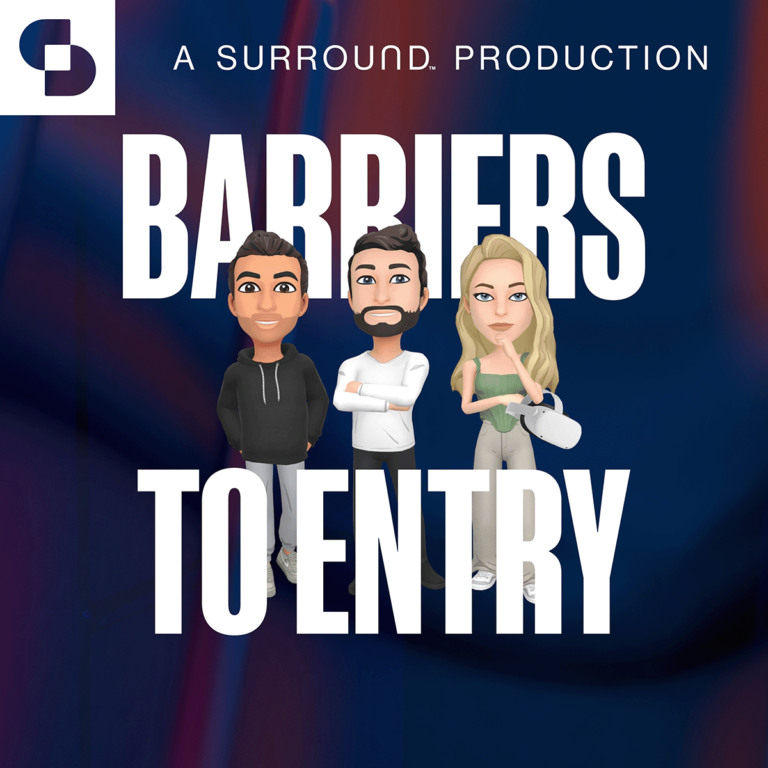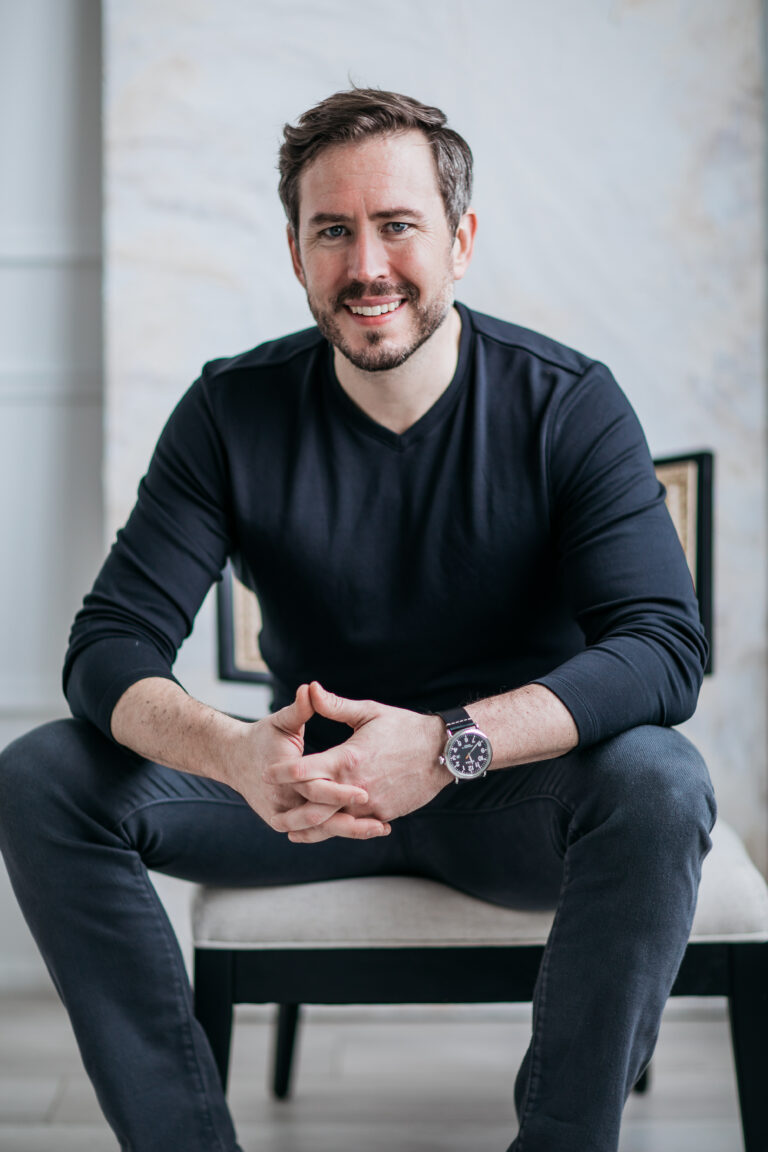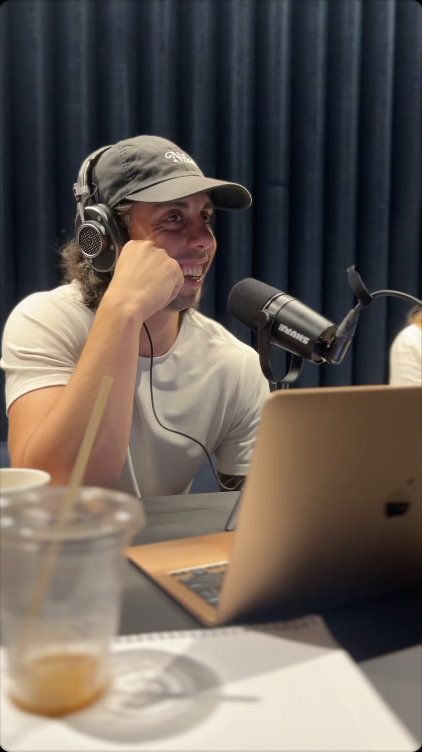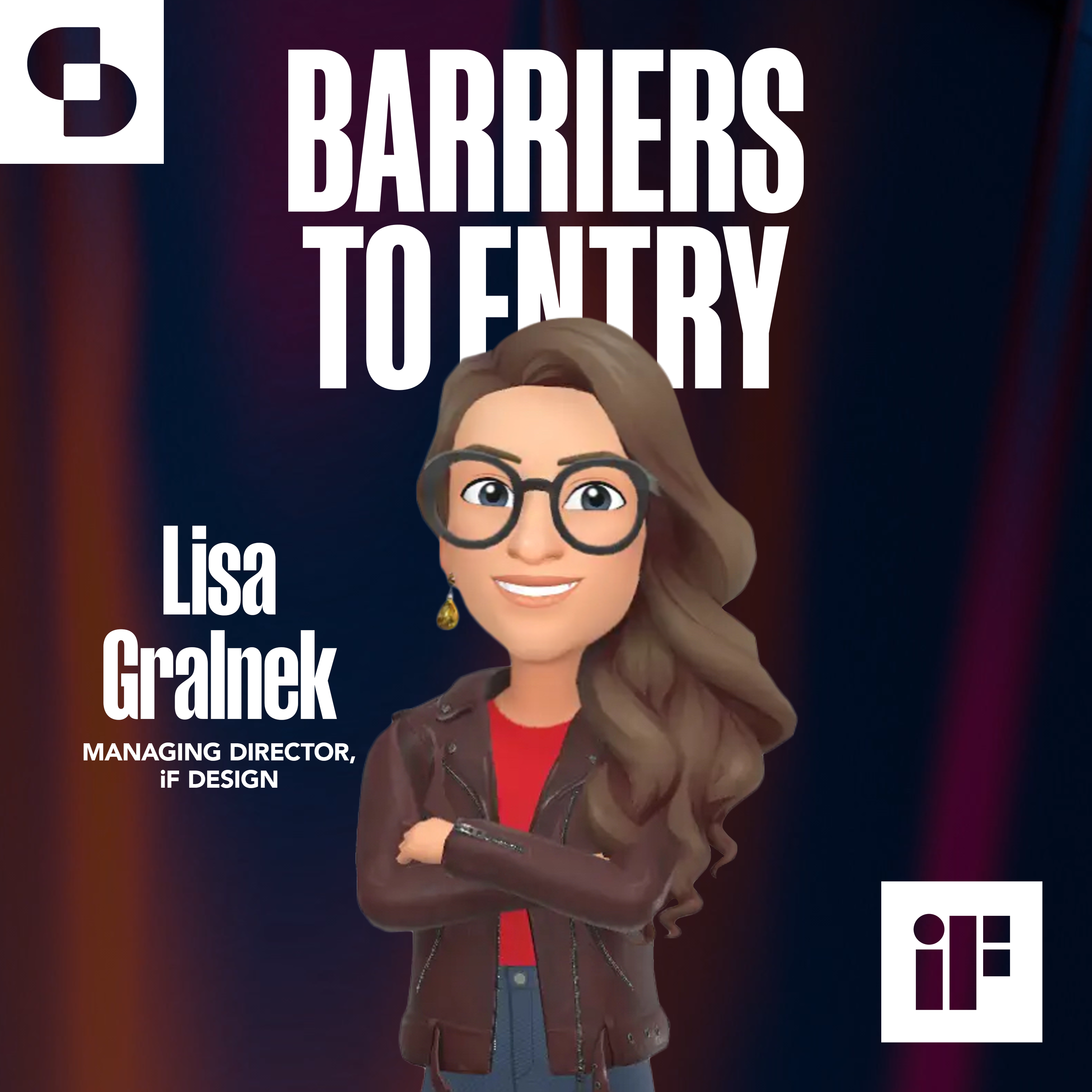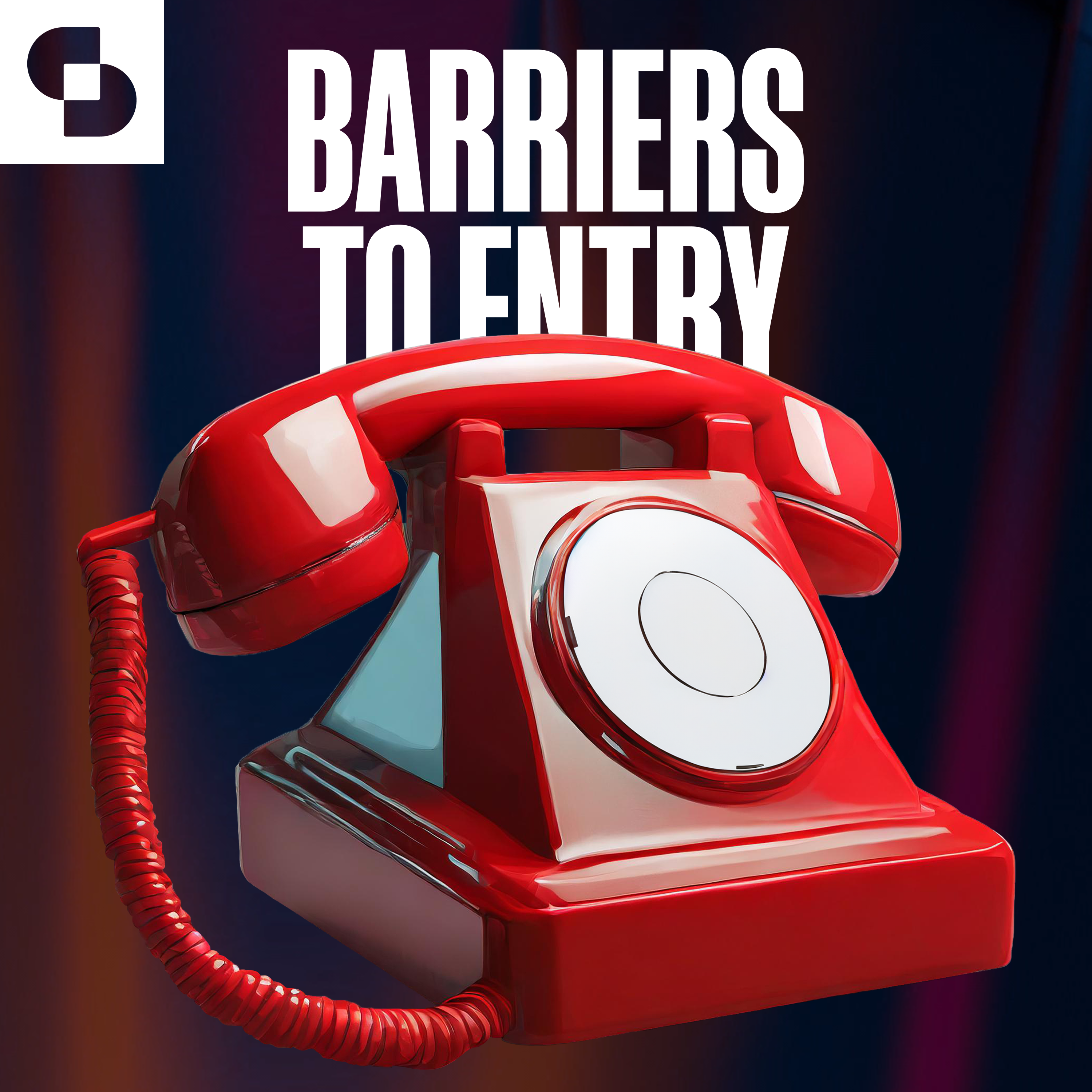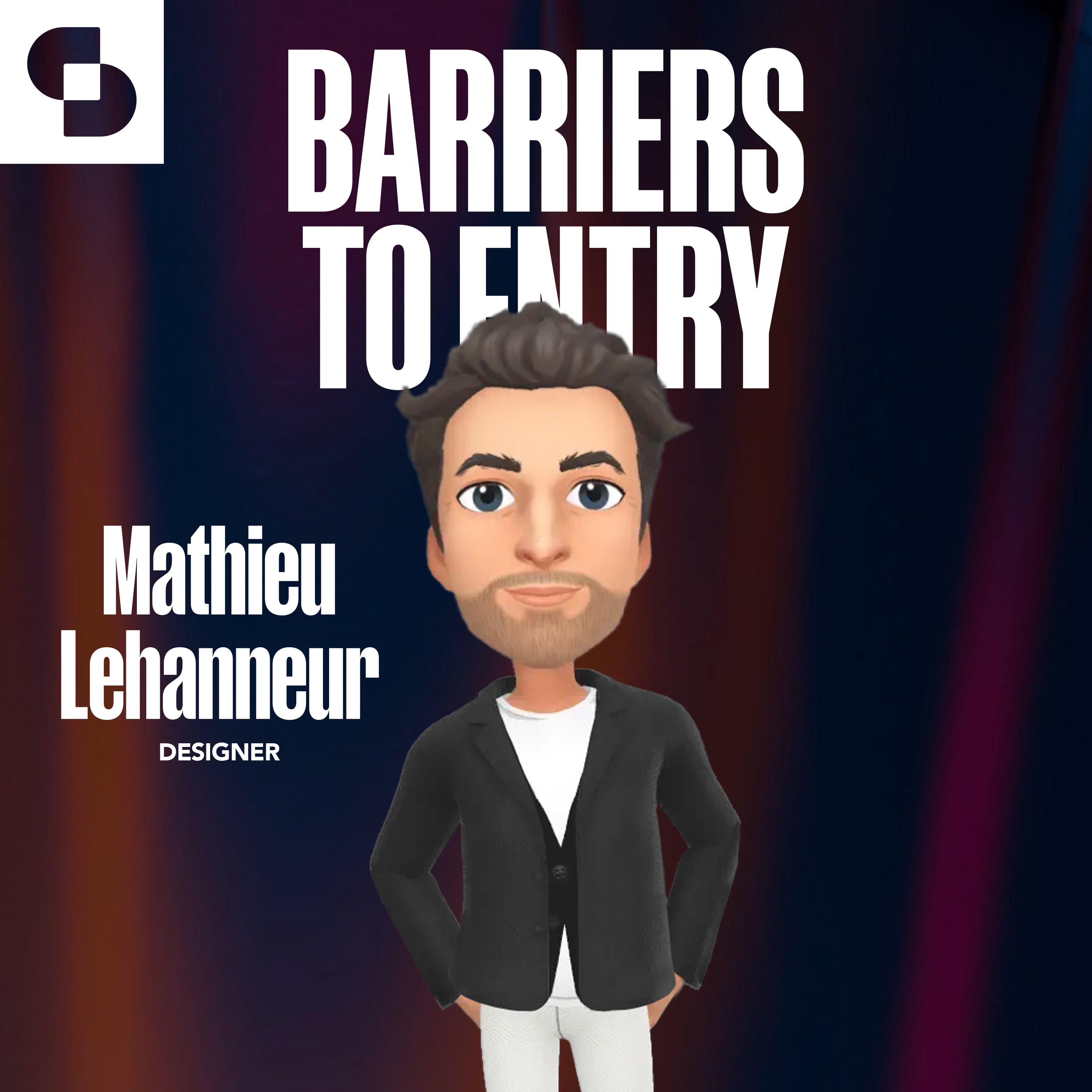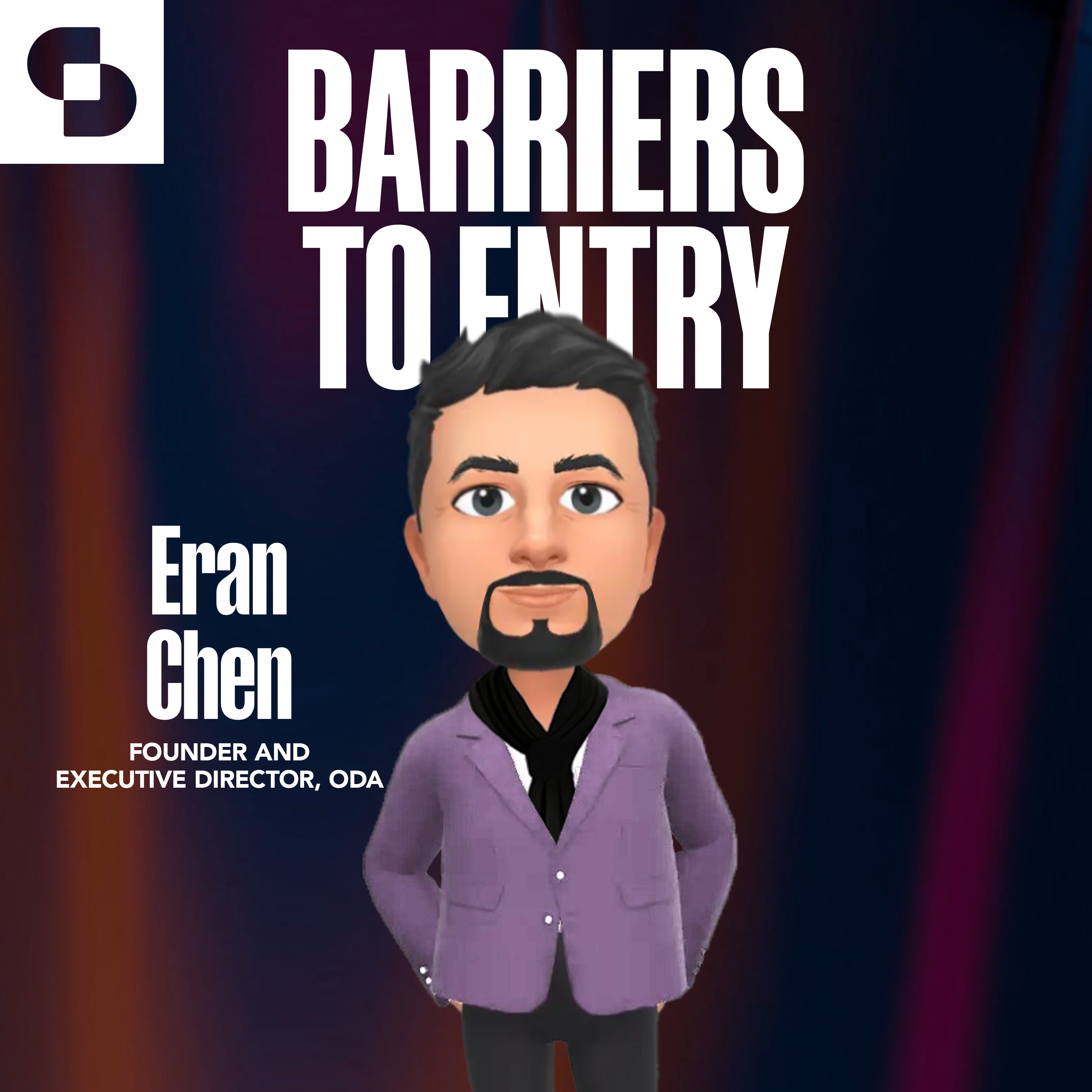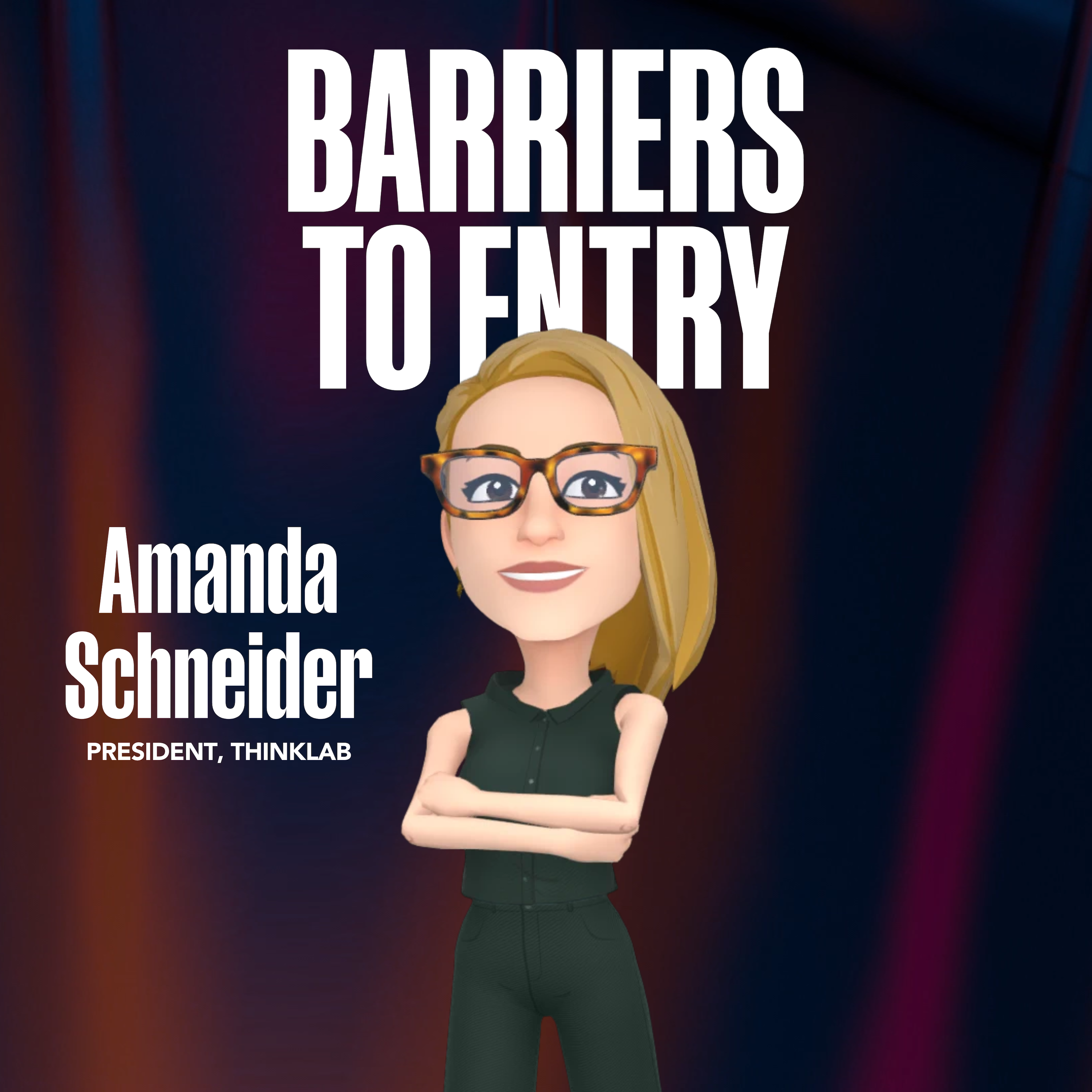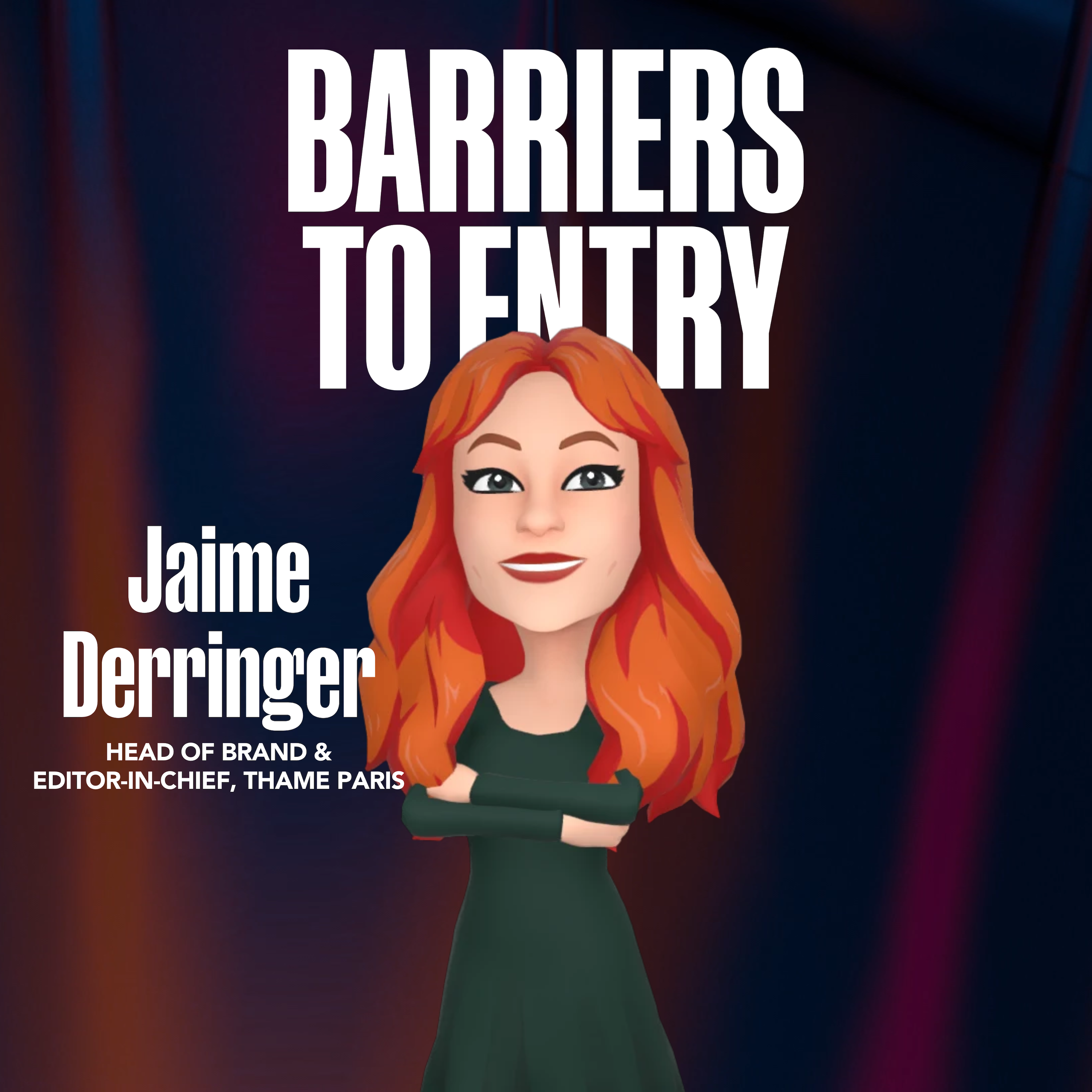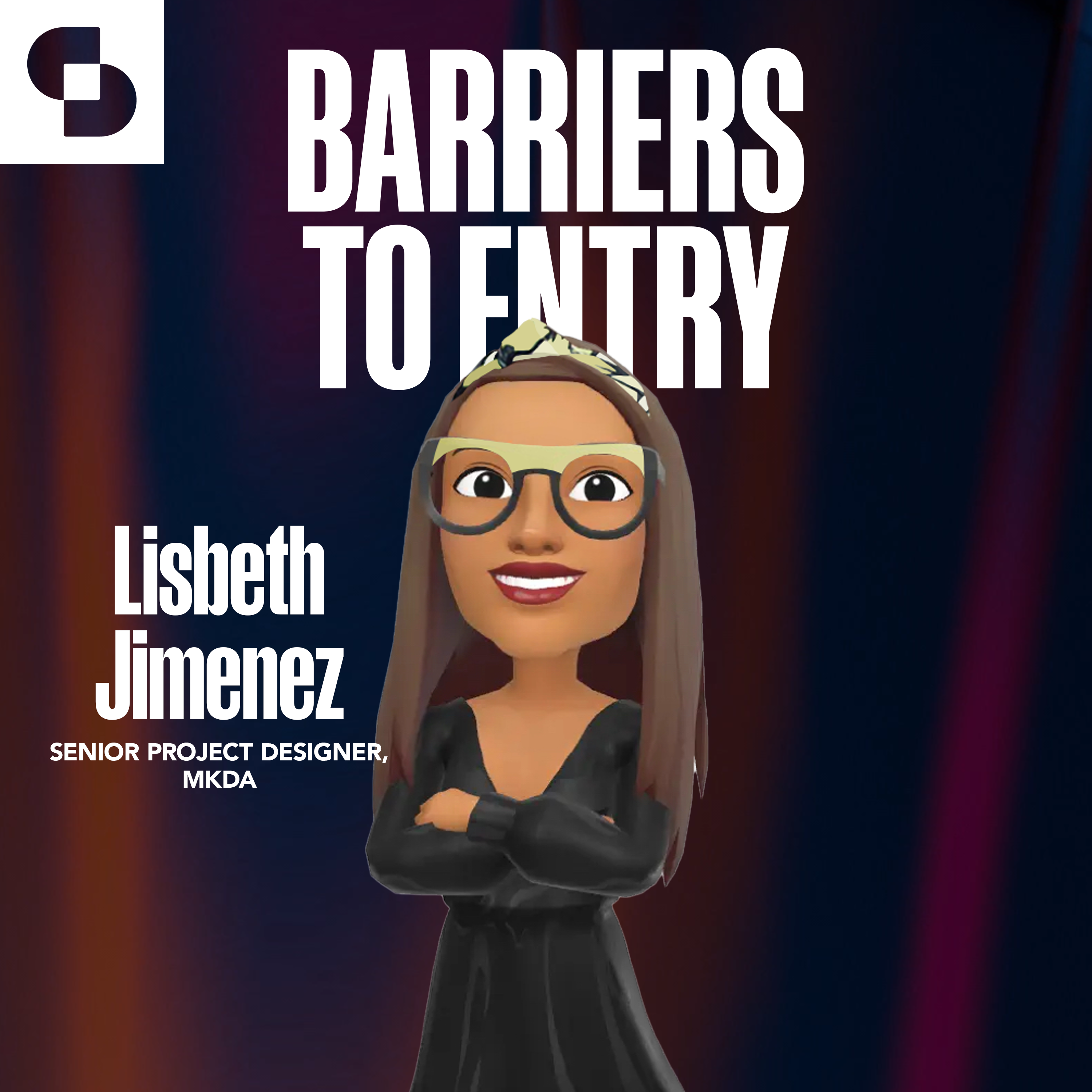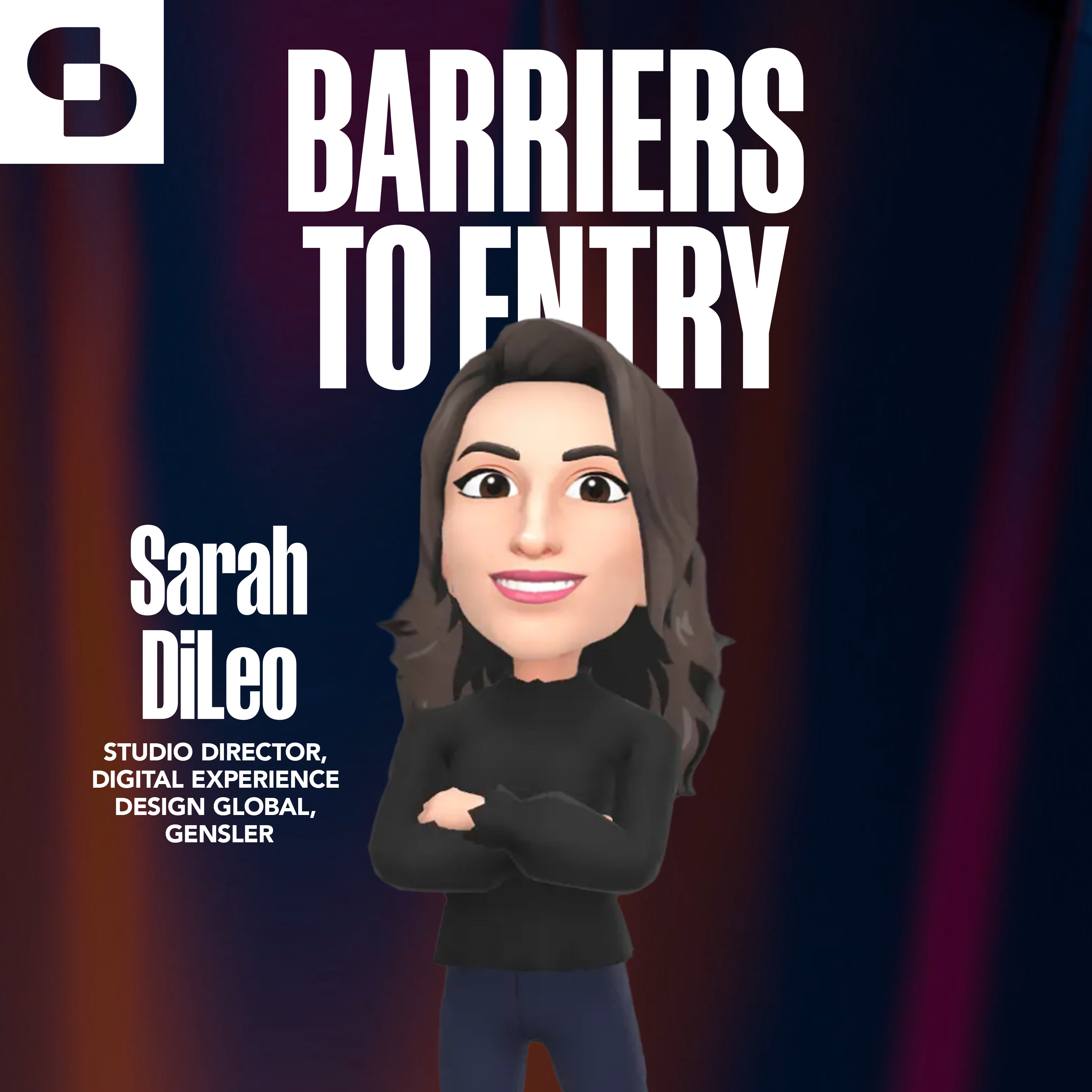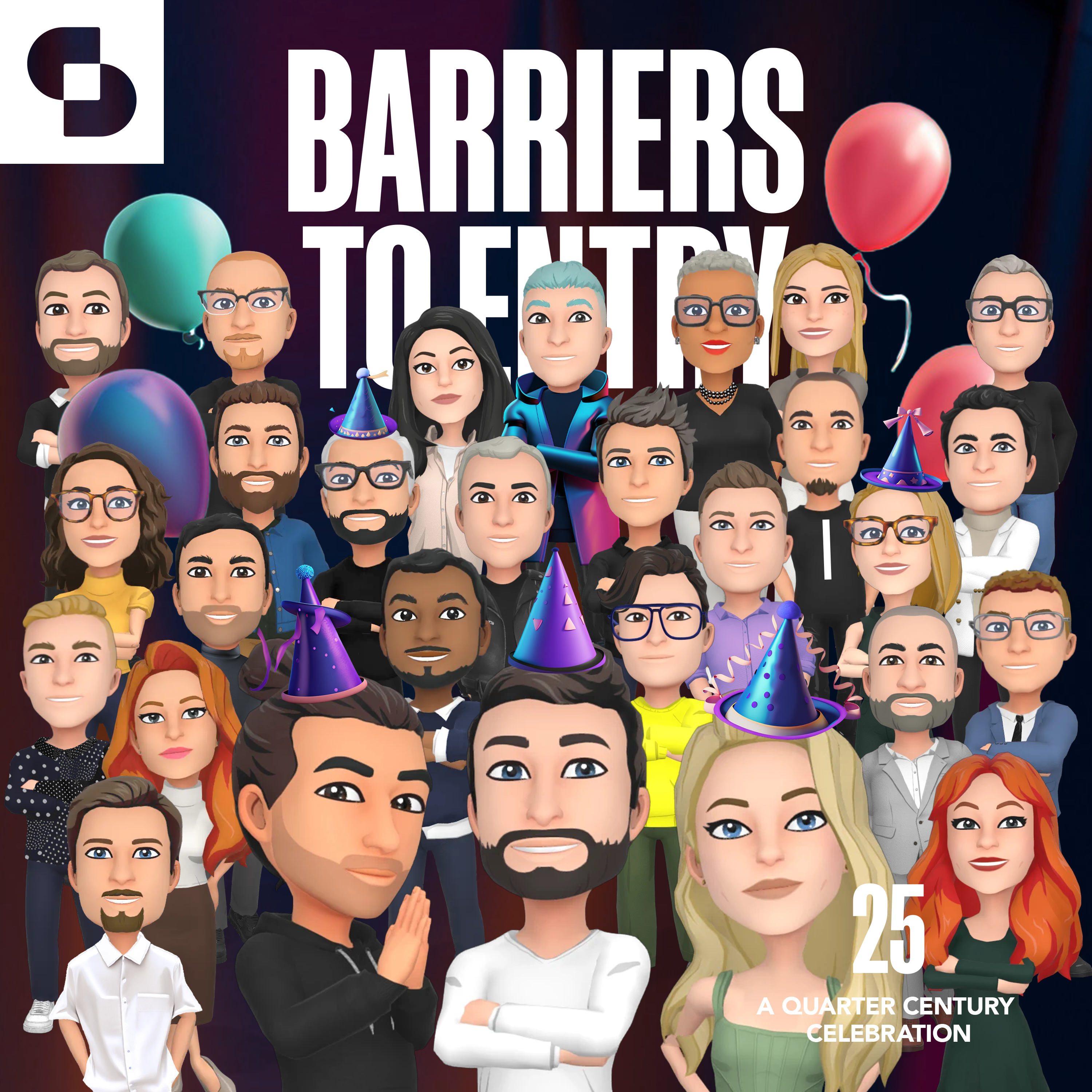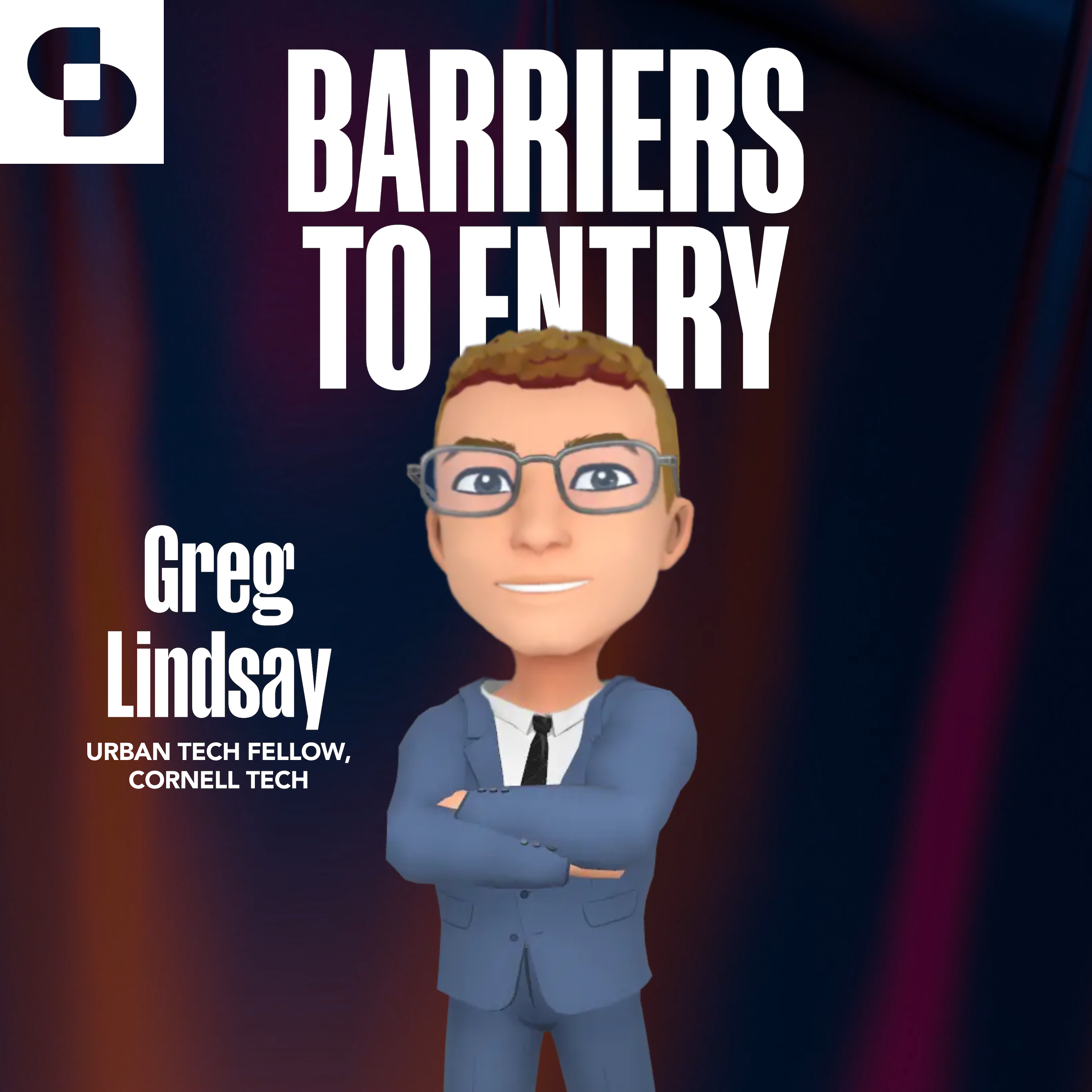This week on the pod, we welcome a true icon in the world of 3D spatial design, Philip Rosedale. Philip is the co-founder of High Fidelity, a company committed to connecting people through superior digital audio, but he’s probably best known as the brain behind Second Life—a pioneering virtual world launched wayyyy back in 2003. If you’re a long-time listener, you’ve definitely heard us mention Second Life on BTE before, and this week we dive into it with one of the OG’s of the metaverse and explore its early role as a testing ground for architects, designers, and manufacturers.
Buckle up for a deep dive into the evolution of 3D Spaces, the role of Artificial Intelligence in technological advancements, and insightful discussions on AI’s effects on the design community.
Connect with Philip Rosedale on LinkedIn!
Moments to check out:
- The origin story of Second Life (and the metaverse) (Starts at 7:25)
- Returning 20 years later and the new world of remote work and learning (Starts at 22:00)
- Barriers to entry for collaborative virtual spaces (Starts at 25:11)
- The impact of Artificial Intelligence, ethics in technology development, and predictions for what happens next (Starts at 32:09)
Connect with our hosts on LinkedIn;
References and resources:
Special game-based ‘metaverse’ edition
- Second Life (Official Site)
- Second Life (Wikipedia)
- Roblox
- Minecraft
- Fortnite
- Decentraland
- VR Chat
- Rec Room
Discover more shows from SURROUND at surroundpodcasts.com. This episode of Barriers to Entry was produced and edited by SANDOW Design Group. Special thanks to the podcast production team: Wize Grazette, Kasey Campbell Thompson, Hannah Viti, Rob Schulte, and Samantha Sager.
Learn more about your ad choices. Visit megaphone.fm/adchoices
Philip Rosedale: [00:00:00] What I had been dreaming about as soon as I heard about the internet was that you might be able to simulate a really large world by connecting computers together, sort of at the server layer over the internet, and then letting people of course, connect to that and do things there. So the dream for me was this dream of building a large empty sandbox or canvas and then watching people come in and make stuff.
Bobby Bonett: Welcome to Barriers to Entry, the podcast where each and every episode we get into it with the leaders, the designers, the early adopters, and the influencers who are driving innovation in the architecture and design industry. It’s the Metaverse, it’s AI, it’s blockchain, and Andrew and Tess.
It’s all happening here. That’s right. I’m here with my vibing co-hosts, Andrew Lane and Tessa Bain. How are you guys doing?
Andrew Lane: Good. We definitely, we’re definitely vibing. Uh, we are this particular, where are you guys right now? Vibe? Where are you? We are in, we’re making a pit stop in [00:01:00] Amsterdam. Wow. On Route two, Copenhagen for the three days of design show.
Mm-hmm. So, um, super happy to be, Internationally podcasting with you today, and the intro might never have been more appropriate, Bobby, because we are coming today with the OG influencer, the OG designer, the OG of the Metaverse. Really super exciting to have Philip Rosedale on the pod today? Maybe a little.
Yeah, exactly. Oh, perfect. It’s a pleasant golf applause. I love that. We have sound effects now. Mm-hmm. But I mean, I remember being in digital marketing back in the day when Second Life popped up as an opportunity for brands and you know, this was, this was really pre-social media. What a thing to have been able to achieve at that point in time.
When you look at what they had made, even then it, it holds up today and it’s so impressive to get to talk to someone who had such early insight into this world that we’re now really seeing expand on mass in front of our eyes.
Bobby Bonett: And so where taping this intro, [00:02:00] it’s Friday and on Monday we’ve got the WWDC event.
Mm-hmm. Right? So what’s happening? On Monday, Tess, what do we got? What’s happening?
Tessa Bain: Well, I believe you were referring to Apple launching their latest and greatest headset.
Bobby Bonett: Hmm. A status symbol? Is that what they’re calling it?
Tessa Bain: Some would say that. And what is the list price? Bobby?
Bobby Bonett: A million, what was it? A million dollars, Andrew?
Andrew Lane: I think we should check in.This is all rumor at this point that by the time you listen to this pod true, this information will be publicly available. We are working off speculative, usually largely credible speculative stories, but many have pointed out that the iPad was a curve ball that Apple threw us when it launched.
Mm-hmm. Mm-hmm. So be really interesting to see how accurate everything we’ve just said is in the context of Tuesday when this podcast launches, but. There’s a ton going on in this space right now, and it, it’s such a cool time to have the chance to talk to someone who really originated it. The Godfather of the Godfather platform.
[00:03:00] Should we just get into it with Philip?
Bobby Bonett: Let’s do it. Let’s do it.
Tessa Bain: Today on barriers to entry, we’re joined by a legend in the world of virtual civilizations or metaverses, if you will. Philip Rosedale is the co-founder of High Fidelity, accompanied with the mission to connect people with extraordinary digital audio.
But he’s probably most known as a creator of Second Life, an early virtual world that launched way back in 2003. You’ve heard us reference Second Life many times on the pod due to the influence, not only on the latest Metaverse movement, the early experimentation for architects, designers, and manufacturers that took place there and on the design work seen throughout this year’s Metaverse architecture and design awards.
Philip, we’re thrilled and honored to have you on the pod today.
Philip Rosedale: Thank you. Good to be here.
Andrew Lane: So kicking off, uh, Philip, you were at the forefront of internet innovation pretty much right away after you graduated from UC San Diego. We won’t date you to kick off the relationship here, but we’ve heard a little bit about Freevue, which is a video conferencing product that you’d founded.
What [00:04:00] was different about video conferencing several decades ago as compared to, you know, where we are now?
Philip Rosedale: That’s great. Well, it was a tiny little black and white postage stamp it at that time. The challenge was transmitting video at all over the internet, and the way I got my start, as you said, was to, try to come up with a way to compress a really bad version of a human face. I, I actually designed the compressor, the codec, to presume that there were eyes and a nose and a mouth roughly in the middle of the screen and so I made this very strange little video compressor that worked over modems.
It worked at a hundred times less bandwidth than we have today. So what was different was that it was really grainy video, but what was magical was that it connected you with other people across the world, which at that time was just, jaw dropping to Yeah. Be able to try.
Bobby Bonett: What spawned the idea to do that? Because I mean, video conferencing now is sort of a, a [00:05:00] no duh, but I’m sure when you’re thinking about launching a platform like that, it’s pretty wild.
Philip Rosedale: What happened was, I had always wanted to build a virtual world, and that was really, since I had been in college and been thinking ever since I had learned to program computers, I’d wanted to do a virtual world, but I knew that in 1994, 1995, both the bandwidth and the graphics capability of computers was just not there for even the most ambitiously early person to go after.
So, I was thinking, okay, oh my gosh, here’s the internet. What am I gonna do with it? It seemed like browsers and websites were already kind of happening. And being a deep engineering person, I was like, well, what about video? There’s gotta be a way to send video over the internet. So I had this interest from the very beginning in real time, things happening across the internet, and I just recognized that it was still too early for virtual worlds as yet.
And so, I started working on video and then my little, myself and my friend little company got bought by Real Networks and that [00:06:00] got my career started.
Bobby Bonett: Real Networks had a pretty extraordinary impact on the internet as we know it. Can you share a little bit about what you accomplished alongside the team at Real while you were there as CTO and and how what Real built at the turn of the century really helped shape what the internet is today?
Philip Rosedale: Absolutely Real Networks had gotten started, I guess a year or two before I joined, and I came on as the video kid. Basically, I was working on video and real at that time was Progressive Networks, and it was real audio and Rob Glazer’s vision, I, I think that got him, drew him into it was the desire to broadcast media, news information to people, which again, in the mid nineties seemed very unusual and ambitious.
You know, nowadays we think of the internet as a gigantic over broadcasting medium. But I joined the company as the video leader, and I later became its CTO. But more than anything, I just worked really hard on all the internal technologies, [00:07:00] making the audio sound better, making the video work and stream and all the stuff around that.
So it gave me a great engineering management and building experience that I would’ve never gotten to have, had I not joined this company that was its own kind of rocketship. We grew really quickly and we went public in 97, I think, and then I left in the middle of 1999 to come back to San Francisco and start Second Life.
Andrew Lane: So that’s a great origin story and I think that we’d just love to hear from all of those experimental moments in the early days that leads you into founding Linden Lab and Second Life. Can you give the audience a broad overview of what it is that you were hoping to build and achieve when you started Second Life?
Philip Rosedale: Right. Well, where a lot of people have kind of started from video games and built things on top of that kind of idea. I was more interested in simulation. My background was physics. I studied physics in college, and I really loved the idea that computers could be used to [00:08:00] simulate. The laws of physics to simulate a world.
And so what I had been dreaming about as soon as I heard about the internet was that you might be able to simulate a really large world by connecting computers together, sort of at the server layer over the internet, and then letting people of course, connect to that and do things there. So the dream for me was this dream of building a large empty sandbox or canvas, and then watching people come in and make stuff. And I was kind of most fascinated by what a lot of people together would build in such a place. You know, what would the world come to look like? And I recognized, as I said earlier, that there wasn’t any way to do that in the mid-nineties.
But in 1999, there were two things that really happened with the internet. The first one was that, broadband. It became obvious in 99 if you were in the middle of it, like we were at Real Networks, that broadband was gonna go all the way. And that very quickly say, before [00:09:00] 2003 or so, everybody was gonna have, uh, a much higher bandwidth connection to the internet.
So that was kind of clear, or at least it was a reasonable guess. As an entrepreneur to, to make. The second thing that happened was Nvidia released a graphics card called the G-Force 2, uh, or graphics chip, I should say. And that chip was in almost all of the Dell Gateway computers that you would buy desktop computers at the time.
And so with those two things having happened, I decided to make a go of it and try to build this virtual world that I had been dreaming about, you know, starting in 1999.
Tessa Bain: When you talk about this or building out this virtual world and this blank canvas, where did you see at the time the role of architects and designers in that space?
Philip Rosedale: It’s interesting you say that because one of the earliest memories I have of dreaming about something like Second Life was actually this dream that I had of like floating in space almost in like a spacesuit, like a magic internet or space explorer. And then being able to [00:10:00] have this tool belt that I imagined it was some sort of architect super tool belt where, I would pull something outta my pocket and then point and make a wall, and then I’d make another wall, and then I’d glue the two walls together. So I had this weird dream of sort of orbiting the earth and sort of building things as a baseman and orbit, and magically just being able to construct things from nothing.
So that was one of the orienting daydreams that was behind Second Life. So, you know, as we started to build it, I kept coming back to this idea of being an architect without limits.
Andrew Lane: It’s interesting. The name itself suggests this idea that you’re having some kind of a duplicate. Right. Did you think about it in that way, to Tess’s question about the architecture, but even just the ways in which the worlds were created.
Were you actively trying to create ways to have this escapism or another opportunity, or what was the thought process behind how you’re enabling these tools for people to build?
Philip Rosedale: Right. So the interesting thing is that when I started, first of all, the name Second Life didn’t come [00:11:00] around until almost the time that we launched.
So that’s kind of interesting in itself. We, we hadn’t given it a name. We called it Linden World. The company’s name, Linden Lab came simply from the fact that we found this warehouse that was our first office on Linden Alley in Hayes Valley in San Francisco. So we named the company after the street. But once we got going and when we had our very earliest alpha tests, we called it Linden World, just because that was easy, and later the name Second Life came around.
And in the beginning I, I didn’t even really believe that we needed to have bodies, that we needed to have avatars in the world. You know, that idea, people’s passion for creating a character and avatar, a representation of themselves was actually a sort of a later thing. As I mentioned earlier, what I was into was this idea of like the world’s biggest Lego kit that.
I would re-create these laws of physics and create rules by which you could build things. And in fact, the idea of an economy that would [00:12:00] allow you to share things if you wanted to for money with people. Mm-hmm. That basic idea of a canvas with Lego blocks and some sort of an economy, that was the earliest idea of what Second life would be.
So the idea of like what would the architects build, if you will, was at the core of the idea. And then as people came into it and demanded that they be able to craft their own likeness. Then I think myself and the rest of us got into this idea of like, oh, what does it mean to be a person in a virtual world?
And so we sort of, uh, got very into that. And then the name Second Life came from that, our marketing leader, Robin Harper, who had worked on amazing projects like The Sims with Will Wright, she said ‘you’re all talking about the capabilities of this thing, but what you should be thinking about in naming it is what does it give someone, you know, what are you getting from it?’
And then we were like, oh, a second life.
Bobby Bonett: I’m curious, [00:13:00] you set out with a really interesting initial vision. You welcome people in as part of the alpha and you get initial feedback like, I’d love to be able to design my own likeness in this space. And I’m sure there’s a lot of other feedback that impacted that initial roadmap.
And uh, I think we have some questions for you later on, Philip, about this idea of, realism and realism in an avatar and realism and dress in a virtual space, et cetera, and how that might lead to adoption. I’m curious, like you’re working with this team at Linden Labs, you’re building out something that you’ve obviously dreamed about for 7, 8, 9 years at least, maybe even longer.
How do you respond to this initial feedback that does kind of change your roadmap a little bit? Is it exciting for you to hear from users about how your vision for this virtual civilization is going to change? Are you discouraged in the ways in which the aesthetic and the world is molding based on the user experience?
I’m wondering as a creator how that, how you take that feedback in those early days.
Philip Rosedale: I think in the end and the whole structure of the company and the way we approached it and the way we approached its culture and management and how we [00:14:00] did things became one of respecting that there was gonna be a lot of twists and turns to the thing and a lot of input from the people who were using, in fact, Unusually, at least compared to some companies, almost everybody who came to Linden Lab were themselves substantial users of Second Life.
And that’s a particularly interesting thing because Second Life, and this is still true today, was and is not for everyone. And so it was an interesting and very. Unique and fascinating group of people who came to it, and therefore those same people came to the company and worked together there. I started out the thing without knowing whether it would succeed.
I mean, I really didn’t have a certainty that there would be a way to make the experience compelling to people in a way, say that would allow us to make money as a company and survive. I wasn’t sure of that. So I would say I was pretty open to. Twiddling around with the [00:15:00] design from the beginning because all I kind of had in my head was this physics simulation.
You know, I wanted to simulate the laws of physics and see, see a world be born. But I didn’t have a lot of specificity beyond that, so I was pretty welcome to changes.
Andrew Lane: So you into the, the whole game theory, those sorts of mechanics that we hear about a lot. No. Some of these more modern, interactive platforms, it was really just a blank canvas to your point.
Philip Rosedale: Yeah, yeah. And the whole idea of like social networks and game loops and motivations and stuff, that always cracked me up. It wasn’t really my background. I got more and more interested much later in. Community and why people choose to live in a certain place and how they become connected to their community and to their neighborhood.
That all became fascinating later on, but I was really just going into it without a lot of certainty about what was gonna happen. You know, another key moment with Second Life, this is like pre Second Life. This is Linden World, but we had this big board meeting. And we were demonstrating features of the [00:16:00] system that we thought would be useful for allowing somebody to kind of build their own game, for example.
So we had like physics and we were blowing things up and running around and shooting each other. And we had all this, we were doing all this weird stuff and then we stopped that part of the board meeting. We stopped the demo and we went on to look at the financials. But I sort of yelled over the wall to the six or seven of us that were there at the time, and I said, hey, you guys keep.
‘Keep just making weird stuff while we’re talking about finances, financials,’ because we had a, we had a screen up on the wall where you could basically see the world and the people that were, that on the team just started like building weird stuff. Like, like a very burning man sort of experience where they were just goofing around and using the tools to kind of make each other laugh.
So if somebody built a big snowman and you could, you could see this thing being built, you know, right in front of you live. And then somebody else built a bunch of tiny snowmen that were like worshiping the larger snowman, you know? And we all started laughing and as the board, we all looked at each [00:17:00] other and we were like, actually this is the point of it.
This collaborative building, this kind of like silliness standing in a circle almost. We suddenly all realized and had this moment where we were like, wow. That’s actually what this is gonna be all about. It’s gonna be about people being creative and maybe a little quirky and just having fun with this tool set.
And I hadn’t had that realization until we just watched everybody kind of clown around in the world.
Andrew Lane: It’s really interesting. We talk a lot on our podcast about 3D spaces and the utility that’s really brought to them now, and this is decades later where all of the game theory and all of the elements around the social web that didn’t exist in this context that you’re speaking in are now kind of table stakes.
And so it’s really interesting to see that. We really just come back to what is the point? What is the thing that people are going to be able to do in here that’s going to give them an opportunity that they might not have otherwise? [00:18:00] Did you Exactly like, what did you think about that future in a moment, like your demigod, snowman boardroom situation?
Philip Rosedale: Well, I guess it, it was all the more inspiring to imagine that we might build something where creativity and people not, not just being creative, but co-creating in this weird way. Like there was this strange sense, like imagine being able to do architecture live with other people watching, right? And having somebody say, oh, I don’t know.
You know, maybe you should move that over to there or something. There’s a sense of that that was really remarkable that we might be able to build something at scale that would have that quality. And I still think that idea of. Really empowering people to be co-creative like that. We’re all talking about it on the internet, but we still haven’t really seen it yet.
We haven’t figured out how to do that for, for a lot of people.
Tessa Bain: I’m just like, my brain was stuck on that last part. Cause I think that’s so cool. You know, really curious, uh, the ways that you approached collaboration with brands. One of the most notable in our industry [00:19:00] is a collaboration that Second Life may have done with Herman Miller.
And kind of wanted to get a sense of what were you thinking at the time of how you were approaching engaging those audiences?
Philip Rosedale: It’s important note, but this was in general the case that we didn’t even know that brands were in Second life until they came to us and showed us something. So we actually didn’t do any APR collaboration, nor did we like co-fund things or anything like that, or discount things.
When brands came in, they bought land just like anybody else, so we didn’t really know. Who or where they were. And then in some cases they’d come to us and we’d maybe like co-market things because it’d be something cool. Like I remember American Apparel opening a t-shirt store, you know, our clothing store in Second Life, and it was cool.
And yes, Herman Miller, you know, obviously that kind of amazing design was the sort of thing that everybody wanted to see anyway. Mm-hmm. But it was very unplanned. And of course we’re seeing that all replay again now with the metaverse and brands. But we never really encouraged any one company or group or anything else to come in and do anything.
We just kind of [00:20:00] rolled with what people were doing. And then, you know, if somebody was trying to do something where we needed to build a new feature to enable it, we would try to do that when it was important. But I, I have to say, we had a remarkably unplanned experience with corporate companies and brands.
There were really two different things we did. One was there were brands that came in and tried to present themselves and sell things and stuff in the world as one would come into New York and do that or whatever. And then there was also an attempt we made to build versions of Second Life that were designed for enterprise use, where you could have your own world inside a company.
Both of those efforts, I would say in the long term, were not successful, and so it’s interesting to look back on that. In the end, it was and is just an experience for individuals more than anything else.
Tessa Bain: Why do you think that it wasn’t successful?
Philip Rosedale: Well, it wasn’t successful because the world was just way too small and it was not a representative group of prospective consumers.
Mm-hmm. So if you were selling tennis [00:21:00] shoes or something to people, there was just no way you were gonna get the kind of exposure or sales or whatever. Through doing it in second life because at its peak, this was true in 2007, and it’s true today. There were, you know, about 50,000 people in there and about a million people using Second life. And so that crowd, because it was dispersed all over the world, didn’t constitute a large enough pool of people to sell things to in any one geography or demographic or whatever. So we just did not have enough people in the world for it to be a consumer experience. And of course, We’re seeing that right now with the Metaverse stuff.
You know, Facebook has not been able to pull enough people into any of these early experiences to make them viable for brands. And of course the same is true of the decentralized approaches to the Metaverse as well. They simply haven’t been able to bring enough people in yet to be. A landing point for brands
Andrew Lane: For your own experience, having come back to be a part of Second Life 20 years later.[00:22:00] Did you see a huge evolution? What was different when you got back? Did they, had they moved stuff around on your desk or like how was the, how was the experience of returning?
Philip Rosedale: Well, one thing is everybody was working remotely, which we had always encouraged, but of course, as a company, we didn’t ever. You know, demand that people go into the office. And we also had offices all over the world, so we had little clusters of people everywhere with different job titles and stuff. But one thing that was surprising was to come back and have the office be empty.
Our flagship office in San Francisco, which is where I am today, you know, has room for 150 people, and there’s never more than a handful of people here, which just shows you the, the effectiveness of remote work, um, in terms of the world itself.
Second, life runs a lot faster on the average computer now, so the level of detail and the graphics and everything are way better than they were back then. But in other ways, very little has changed. I mean, I think there’s this phenomena of. Community and people driven things, which is wonderful that they have their [00:23:00] own life and they change more slowly than one might say as an entrepreneur desire.
So Second Life, I’d say, is really a very, very similar experience today to what it was when it got into the public zeitgeist in 2006.
Bobby Bonett: When we look at other metaverses, Philip, and we’ve talked a lot on the podcast about Decentraland and Spatial in particular. The platforms themselves don’t often tout their role as destinations for virtual meetings or virtual work, but when we look at Second Life, you just mentioned remote work and Second Life as, and Linden Labs is a company talking about virtual work for some time for Second Life.
It’s one of the primary features right there on the platform’s homepage. I think it says like Host virtual meetings, host virtual events in Second Life. Are there some user stories you can point to in Second Life that relate to the future of work? Whether it is, I, I guess I’m even more interested in kind of day-to-day work rather than, you know, a, a company conference for example.
But it is interesting to kind of see that angle as a primary user story right there in marketing, right on the [00:24:00] homepage.
Philip Rosedale: Yeah, certainly this idea of getting people together practically for the purpose of collaborative work is very much. The dream, right? The continuing dream of a lot of technologists, and we’ve all taken a lot of different cracks at it in terms of a user story that does work.
Second Life is full of academics who teach in Second Life. There’s a lot of schools and a lot of professionals that have conferences. There’s multiple teaching in virtual worlds conferences that go on in Second Life where people are exchanging ideas about how do you do teaching in an environment like this.
So that’s the plus side. And I think, you know, Meta with Horizons has presented this idea that you could create a workroom in virtual reality. So I think everybody has been pushing on the idea because it seems very likely that teaching and work ultimately are probably the driver of expanded use of virtual worlds.
I actually think that’s likely, it’s a bit contentious, but I would say that [00:25:00] experiences like work and learning are more likely to be the lead applications than gaming. Mm-hmm. It, it’s a good debate and I, I’m not sure myself, there’s a lot of sides to it, but I think that’s gonna happen first.
Andrew Lane: Well, I think it’s interesting, we talk about the utility of Metaverses a lot and this idea that you brought up before that it’s hard to get a critical mass of consumers as an example in a broad open metaverse that’s like, Hey, here’s another place you could go to Cleveland or you could come here.
Right? So when we’re thinking about these places and we create true purpose for them, in this case work-based collaboration, but in other types of collaboration, it makes a lot of sense. So what are some of the things that you’re thinking about to make. Your tool, a more likely collaborative tool than say, Slack or Riverside, a collaborative audio platform that we’re on right now.
Philip Rosedale: The biggest problem with virtual worlds is this adults, grownups are not yet comfortable communicating, particularly with strangers as avatars. [00:26:00] So it’s very simple. The big problem is that nobody, not Second Life, not Facebook, not to Decentraland, not anybody as yet has broken through the problem that if you take a typical person, if you just grab your average architect and you.
Put them in front of a screen or you put a VR headset on them, and I can speak to the problems that they’re gonna have are somewhat different, but. Whether you put them in front of something like Second Life or you put a virtual reality headset on them and put them in Horizon workrooms, what they will tell you is that though they find the experience fascinating, they are very uncomfortable with interacting live with other people as an avatar, and I think I know the reasons for this.
That’s the good news. I could speak for hours about why that’s happening. Unfortunately, the bad news is I don’t yet know how to fix it. So we have some basic science problems that are stopping progress and whether you, you [00:27:00] know, you could, we could start from the point of something like Zoom or Riverside, which we’re using, and go talk about it from there.
Or we can talk about it from the vantage point of avatars, but either way it just doesn’t work yet. You know, as we all know on Zoom, we’ve got that Brady Bunch, you can’t see who’s looking at who. And it turns out that looking at people is unbelievably important. It’s a core requirement for human communication.
And so we haven’t cracked it yet. You can’t see Second Life avatars glancing at each other either. And for people to be comfortable communicating, they have to have that capability.
Bobby Bonett: So is communication realism a major factor? Cause I know you’ve talked about that, right? Down to, as I mentioned earlier, an avatar wearing clothes that you would wear in real life.
And then the social cues that you mentioned as well, are those some of the core components that are. In some ways technically complicated to solve in other ways, maybe feature sets that we need to think about developing just to get people feeling more comfortable communicating with a stranger or somebody they might not recognize.
Philip Rosedale: [00:28:00] Yeah. And when you talk about realism, there’s different pieces of it, right? Mm-hmm That break into different categories. One thing is just that I can present you, for example, with an avatar if we’re gonna go that way. That is sufficiently detailed and distinctive and that I’m comfortable with representing me.
So that’s the kind of photorealism, and you see new things like metahuman from. Unreal that is these sort of incredibly realistic looking avatars. So there’s realism at the level of look looking like you wanna look, looking attractive, if you wanna look attractive. The kind of vermilitude with human characters that people wanna achieve.
But I think the more impactful one actually is stuff like latency. And nonverbal communication that we touched on there. So they’ll delay if, for example, you don’t have an audio delay round trip of less than about a quarter of a second, people can’t start talking at the end of a sentence, which they normally are able to do.
And that means in a group conversation, we all know the feeling. It’s incredibly uncomfortable, right? You can’t break in, when you talk about nonverbal communication, you have [00:29:00] to talk about things like leaning forward and leaning back. Which by the way, is a very important signal that we present with our upper bodies.
VR systems don’t track our upper bodies correctly. If you don’t know where somebody’s butt is compared to their head, you can’t present their non-verbal communication correctly. Ditto with gaze like we were talking about before. People are very, very good at seeing where other people are looking, and if you can’t see.
That information conveyed correctly. You are very uncomfortable. I always give the example, would you go to a Facebook Horizons workroom meeting and give a presentation while your boss watched without speaking as one of the avatars? And of course the answer is no way. Nobody would do that. That’s insane because you can’t know what your boss is saying.
What? What is she trying to say to you with her body language in her face as she’s listening to your presentation? You’re blind, you know the…
Andrew Lane: to read the room disappears, right? Mm-hmm.
Philip Rosedale: Exactly. Well put.
Bobby Bonett: Yeah. So you do feel as though there are ways to get us [00:30:00] past that tipping point of somebody willing to go into a virtual space and spend 10 hours a day. Two days a week, let’s call it, working in that virtual space, because I think by and large we’ve chatted with a number of folks from all different walks of life on the show, and, and I think that’s the kind of the bridge thus far is envisioning a place where spending more than just a token amount of time engaging in a metaverse.
Again, whether it’s with goggles on or, or in a screen where I’m using my keyboard.
Philip Rosedale: Yeah, I mean, there’s just so many problems that we’ve gotta get by. Mm-hmm. But you’re right. I think that, again, getting grownups and I, I keep saying that because. It’s important to understand that all of the activity that’s driving the kind of commercial discussion around Metaverses is basically focused on three representative products that we here discussed a lot.
One of them is Roblox. The other one is Minecraft is often discussed, and another one is Fortnite. And the thing that’s really important to note about those three products is that they’re entirely populated by [00:31:00] young kids. So typically from age eight to about age 14. And then things like Fortnite might stretch up to age 16 or 18, but not much beyond that.
And the reason for that is that young kids are willing to take on a second life and become avatars. In fact, they’re delighted to do that. If you go to a nine year old and you say, would you like to be 20 years old and drive a car in a virtual world? You know, they’re like, what do I need to do to get into this experience?
Right. So, kids and their willingness to be avatars is what’s driving some of the commercial hype around the metaverse right now. But adults are not as yet, or 90 some percent of them are not yet ready to become avatars. And so the problem we have to solve is the sniff test, if you will, is that adults would come in, put the headset on, put the headphones on, whatever, and say, cool, I’m good with this.
You know? I see. Tessa over there, and I get her. I understand what she’s doing, and we’re just not [00:32:00] there yet with the tech. But I do think I’m an optimist and I am also a deep technologist. And so I can talk lots about how we get there, but it’s important to note that we’re absolutely not there right now.
Andrew Lane: You can take a little bit of comfort. I heard it described in this context that Mark Zuckerberg’s spend over the course of the last eight to 12 quarters has been roughly equivalent to the Apollo project trying to solve some of these problems. So, uh, there is definitely resources being put against solving it, but maybe we should talk about another area of exorbitant tech investment right now and.
And shift gears a little bit to AI and how that’s starting to come into everything that you’re doing. What is it that’s really encouraging you with this really rapid development that we’ve seen since the release of Chat GPT 4 and also Google Bard now coming along and even via Facebook themselves, working on some large language models?
Philip Rosedale: Well, we’ve been doing a lot of looking at my lab here in San Francisco at AI and trying to understand it, and we’ve got a bunch of us trying to make sense of it and play [00:33:00] around with different projects. AI has got a couple of big different areas that are fascinating. I’m an advisor too, and helped with the creation of MidJourney, which is this amazing image generation product.
Andrew Lane: Very, very well known to the design community. Right now, it’s the most exciting and terrifying thing that’s happened in some time.
Philip Rosedale: Yeah, and I, I think Mid Journey is just amazing. I was there when David, you know, the founder first got it kind of working. And I remember being in a hotel room and looking at the images coming out and saying, this is the moment where we are first seeing images that are unambiguously beyond human capacity.
And that’s what I felt like, I mean, of course that’s a subjective statement, but it was quite a moment to see that happening. Mm-hmm. So I’ve been following along with AI really closely. I think there’s. Obviously tremendous promise, tremendous peril, a lot of misunderstanding. My background in physics and simulation is kind of similar to the stuff that’s being done in AI with say the large models and image gen stuff.
There’s a [00:34:00] sort of a similarity in the coding there. It’s, it’s interesting actually that thinking about virtual worlds is actually strangely similar compute wise to running them. So there’s a kind of a wonderful. Maybe we’re all a simulation and in fact, maybe we’re all just someone else’s dream, right?
AI is just, obviously, it’s just mind boggling what’s going on. There is a lot of substance there where, for example, with crypto, there has been a lot less substance in progress than discussion. But I think with AI, we are definitely seeing very, very substantial new things happening.
Bobby Bonett: There’s a great line on your Twitter timeline, Philip. Short anyone who thinks they know what happens next, so we won’t ask you what’s going to happen next. But given the technologies and tools that we’ve been discussing today, and you mentioned just a moment ago that you view yourself as an optimist. I’m wondering what you hope happens next. And I would say bonus points, if you can tie that back into future of work.
Just given, if you think about our listeners, those that are thinking about workplace and the workplace design in particular.
Philip Rosedale: Well, at a [00:35:00] high level, I think that we’ve had this detour of the last decade or so where we’ve let targeted advertising, surveillance and social media kind of convince us that the internet is just a force for evil, which is just completely not true.
As someone who started as an entrepreneur in 1994, I can tell you that the first 10 years, you know, ‘94 say to ‘04, we’re just an unbridled excitement and optimism about how we were connecting. We were, we’re trying to connect people, and I think there’s been this unfortunate detour that’s been driven more than anything by advertising into using that technology to manipulate and make people dislike each other, because it unfortunately, that makes some money.
Mm-hmm. But I think what is going to happen next, what has to happen next is that we, as a human society must take very seriously. That we can do harm to each other like that. I was saying also on Twitter, I think yesterday I was saying that software engineering has not had its [00:36:00] Hiroshima, which is a very serious consideration, right?
That that we as software developers working on things like the internet, really haven’t had terrible, terrible things happen to give us a sort of set of a moral compass and a guideline around the work that we do. So I, I think that one thing that has to happen is everybody that’s an entrepreneur like myself that’s working on internet technology has to grow up and realize this is serious stuff.
This isn’t just kids trying to make some extra money. This is stuff that could end the world. And so it’s important, I think that we do that. That’s set. It is entirely possible that we get back to using the internet and using technology to create trust between people. Establish long-range communication in ways that are healthy.
Allow people to come together in groups, for example, and debate things. All of these are things that we can do with technology. Some of them are harder than others, but we can start today and we can make progress on this stuff. So as an optimist and as a kind of low level engineer, I think that there’s.
An abundance of [00:37:00] opportunity, both with AI and just with core technology work, like what we’ve been working on to build trust, bring people back together, make people friends again online. And I think that that’s obviously what we’ve gotta do in that statement about shorting anyone who thinks they know.
What happens comes just from the observation that the power of technology to create change is standing on its own shoulders. It, it is growing exponentially fast. And that means that our ability as humans to predict. What makes sense say in two years is just going down and down, given that we have only a small finite sized brain to contemplate it with.
Andrew Lane: I think we love the optimism that you come at this with and obviously you’d made the point. Pessimisms great for headlines. What a couple in particular, recently, obviously the death of the Metaverse was about two weeks ago. Um, but then right around the same time period we saw a pretty biting headline I would say about Jeffrey Hinton, who’s known as the Godfather of AI.
Basically warning of the kind of danger you just [00:38:00] spoke of, but then kind of stepping back from that and not. Really providing an optimistic path of how we might avoid said danger. I’m curious if you have thoughts on what’s required of your colleagues in the software development and in the technology development world that could paint a more optimistic path forward for what we can do at this moment of great responsibility.
Philip Rosedale: Well, humans are social animals and we’ve always abided by social contracts. So we are all members of communities, multiple communities in which there are rules and guidelines that are substantial. You know, if you’re in college, there’s a set of things you could do to get you thrown out and pushed outta that community.
If you’re at work, there are different things. If you’re bowling, there are different things, you know. So the the first thing is all it takes is for us to establish guidelines on behavior and then enforce them in communities for us to basically regulate things. That’s what we’re gonna need to do, for example, with AI.
And I think we can get there, you know, like the basic idea that, for example, you can’t use AI to manipulate people. I mean, we just all have to get that in our [00:39:00] heads because unless you have extraordinary hubris, right? Everyone realizes that manipulating people with AI is going to be extremely easy. So we need to legislate.
But I think more importantly, just agree amongst ourselves that these are not okay things to do. I mean, people don’t pollute the world in ways that we did 20 or 30 years ago now, because everybody would just be incredibly offended by it. Right? Those are social contracts, not necessarily legislative contracts that keep our behaviors right.
And so I think, for example, not using AI to further power advertising or surveillance is something that we can. Make ourselves all abide by. We can have laws around it, but we can also just have the sense that you’re being a terrible person if you’re doing that. For example, the entrepreneurial community.
I’ve been really a fan lately of talking about a hippocratic oath of sorts for entrepreneurs, specifically in software, which is my world, and I think there’s [00:40:00] merit to that and I think we’ll get to it. You know, I think that. People like to abide by simple principles, and so it’s a question of figuring out what they are.
Things like monopoly power, right? I think monopoly power, network effects, like we’ve all talked about over the years, right? Of course the network effects are great, but they mean that you get monopolies that are extremely hard to unseat. Like for example, Meta. That’s another example of something where we can just make a collective decision.
That like abusing a monopoly position due to network effects is just not okay. Not just illegal, but it’s simply unacceptable. It’s gross. You know, people won’t like you, you won’t get dates. It won’t work out well for you if you don’t do these things. And I think that kind of pressure works super for people
Andrew Lane: and hopefully, yeah, people won’t just turn to AI girlfriends in this scenario where you can’t get dates anymore cause they’re popular.
Philip Rosedale: But, and let me just say, as the Second life guy, This idea of AI boyfriends or girlfriends that take us away, that present us with an easier person to interact with than real people in the [00:41:00] real world. That’s an incredibly dangerous direction, and that’s another example of where we have to just decide collectively not to go down that road.
I think there are good conversations with AI’s. For example, AI’s can be therapists that’s actually been studied already. Mm-hmm. And can be very helpful to people. So there are good examples of one-on-one conversations within, you know, intimate conversations that can be good for you. But there is also this danger that if we use AI to talk even less to each other, but instead talk to AI’s, we are going in a very bad direction.
But again, what I just said is a relatively easy compass. That’s not a mysterious thing. Like some of the surveillance advertising stuff was a little mysterious. It’s hard to beat up Facebook too much beyond a point because you realize that at least many of the people working there, they didn’t mean to cause harm.
It was complicated. You know, the fact that you could gather this information about people to better target ads, but then that information gets bought and used for other things and you kind of turn a blind eye to it. [00:42:00] That stuff is pretty nuanced, but I think like not having AI girlfriends of a certain type.
That’s a pretty simple statement, and I think everybody at some point will be like, okay, I see the merit in that. You know? Fair.
Bobby Bonett: I mean, we could spend another two or three hours with you, Philip, but we didn’t get a chance to touch on High Fidelity because we went deep on Second Life, and then we wanted to hear you out on ai.
So before we let you go, we’d love to hear a couple minutes on what you’re working on. At High Fidelity, what the latest is. I know the company’s really focused on s spatial audio right now, and that’s another kind of aspect to this realism angle. Yeah. When it comes to virtual civilizations and virtual worlds.
Philip Rosedale: Yeah. Well, first of all, High Fidelity in terms of a couple of plugs. High Fidelity does work on spatial audio. We’ve actually not been able to turn it on yet, which is amazing. Right? Like why doesn’t Zoom have spatial audio? Right. The biggest reason for that, unfortunately, is that Bluetooth, the wireless headphones we all use, the Bluetooth standard, it actually doesn’t support stereo if you’re talking, which is just so unfortunate.
So we’ve got this waiting game that [00:43:00] we’ve been in with High Fidelity where as soon as Bluetooth gets updated and it’s in the middle of it right now to support stereo audio, it’ll open up the possibility to do plug-ins and to use High Fidelity to add spatial audio to everything like discord and Zoom and all of these different systems.
So, that’s something I’m really excited about. We’ve kind of had to wait. I can’t believe we were early even on that, but we’ve had to wait for that. But that’s what we’re doing with high fidelity. We’re turning on spatial audio in different systems, and yeah, if you go to our website and come talk to us, we’d love to help you out if you’re working on that.
The other plug I have is that I’m building this new lab that I haven’t even announced yet in San Francisco where I’m trying to get. People that wanna work on technology for good and wanna basically do some of the things that we’ve been talking about in this podcast. We’re building an environment that’s gonna have investors, it’s gonna have people helping each other.
It’s gonna have entrepreneurs, engineers, you know, young and old, everybody working together to work on new projects that move us toward good with technology. And [00:44:00] so if you’re interested in that, find me. And, and let’s talk more.
Tessa Bain: That’s super positive on every show. Philip, we’d love to ask our guests what is a piece of advice that they would share or some resources that they can share with our listeners that are just getting started in this space.
Philip Rosedale: Well, for virtual worlds, I would say that it is still such a complex environment that I highly recommend those interested in the space to actually go in and use these different worlds. So for example, Second Life, you mentioned a Decentraland, a VR chat. Rec room, you know, the systems that are out there that are, that are Spatial, that are pushing the boundaries of what can be done with virtual worlds.
Those worlds are so fascinating and weird and different that it’s definitely still the starting point to get time on the ground, if you will, on the virtual ground as an avatar. So that would be my recommendation there.
Bobby Bonett: We really appreciate the time today. That was an amazing sort of history lesson. Looking at the initial moments of Second Life, your vision for the platform, and then taking [00:45:00] it forward to where we’re at today, and then maybe a little bit at where we might be going, where you’re hoping we’re going with that kind of optimistic angle, and then, A warning, right? A warning against those AI boyfriends and girlfriends to stay away.
Thanks for the time today, Philip. We really appreciate it.
Philip Rosedale: Really appreciate it. Thank you. It was great to do this. Thanks folks.
Bobby Bonett: So, Philip Rosedale, what a conversation, guys. Mm-hmm. Mm-hmm. You know, we always like to wrap things up and reminisce on the conversation. The first thing I did, When we wrapped up the call was I phone to friend Stephen Wilsey, Head of Video at SANDOW Design Group who, who’s plug plug, he operates the Studio by SANDOW.
That’s another plug for you. And Stephen has spent quite a bit of time experimenting on Midjourney, which I know so many folks are. And Philip, who as you mentioned in, in the intro, Andrew, an OG a Godfather in this space of innovation of the Metaverse. Now how many years later in the room when the creators of Mid Journey are having their aha moment?
Holy [00:46:00] moly, we can make AI generate the type of imagery that you could not tell the difference from what is real and what is generated. By AI, I mean like Philip’s still making that level of impact. That was just cool. I mean, just a cool, cool,
Andrew Lane: cool thing and the holy moly, it felt like my aunt was there in the room remarking at that moment.
Bobby Bonett: But sometimes I listen to this show with my daughters in the car, Andrew.
Andrew Lane: Okay. Yeah, exactly. So gotta keep it pg. Yes. It’s so true that it, it was just so inspiring to hear sort of the concepts of community BTE previous episode plug with Sam Hamilton, who we talked to, Creative director of Decentraland to hear kind of the way that.
Philip 20 plus years ago, and Sam in the modern day are really thinking about community and thinking about a lot of the aspects of how to build an immersive online space. The similarities there were really striking. I loved Philip’s story about the board meeting where they put the live feed up online and and watched people build in real time, and I think that.
As we start [00:47:00] to talk more and more about the industrial metaverse and the potential for these 3D spatial techs, it’s really about like, how do we harness that collaborative spirit and opportunity and turn it into something that’s going to really benefit business? Because now 20 years after that board meeting, we understand the social web, we understand e-commerce, we understand all of these digital elements so much better.
And they’re all layered into these platforms. And so the ceiling that we have to play with where all Philip and his partners were trying to do was figure out a way to cap out the bandwidth of the 2003 version of the internet. That’s not our problem anymore. The bandwidth is becoming to a point where it’s exponential and unlimited.
And so what people can imagine is just really beginning to be explored and. That’s exciting.
And
Tessa Bain: speaking of potential too, I’m really excited to see what’s next for Philip when he shared a little bit about what he’s working on in terms of the way that digital sort of layers over our physical lives and the technology innovation that is required for us to start [00:48:00] integrating it seamlessly.
So he was speaking about the way in video calls right now, there’s a leg between audio when two people are speaking and it make that natural conversation flow a little more difficult to achieve. And so, Philip and his team working on that. I’m excited to see what that means, just even for the future of work and for just day-to-day interactions in the virtual space.
Andrew Lane: Well, I mean, fortunately for all of us, our conversation flow is pretty much always effortless on the BTE pod here, entering deeply into the middle of the summer of BTE. Mm. Yes. This was just a real treat to have Philip on board, and I can’t wait to continue these conversations with some other great folks throughout the rest of this summer.
But as always, we could never have done this without our wonderful production team of Sam and Wize and Hannah, Casey, Rob Schulte, everybody at the studio by SANDOW. If you were not aware, you hadn’t been listening, you’re new to the show because Philip Rosedale brought you in. Barriers to Entry is a part of the SURROUND podcast network brought to you by SANDOW.
You can [00:49:00] make sure to go to SURROUND podcasts. That’s podcast with an S. Dot com. Smash the follow button, follow along for more great insights, more great conversations. And as always, join us next time as we continue to break down the barriers to entry and, uh, come see us in NeoCon as well. Exactly.
Tessa Bain: Much more to share.

